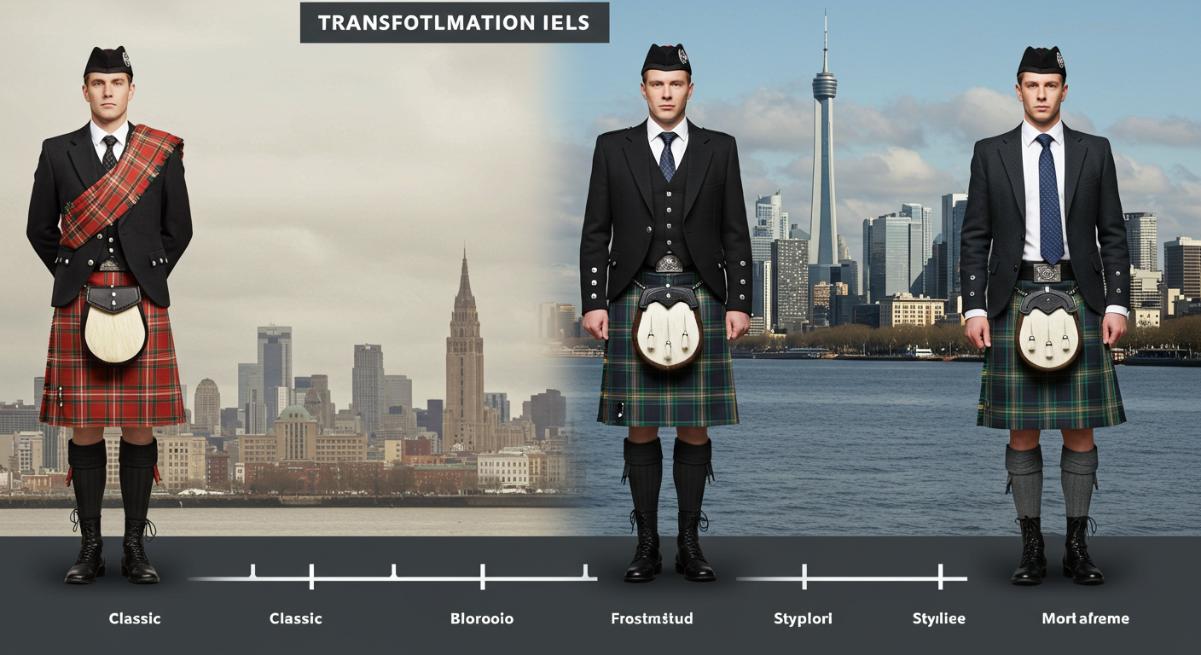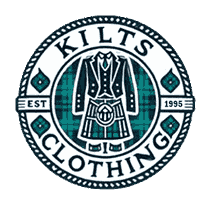The Evolution of the Scottish Kilt: From Traditional Highland Wear to Modern Fashion

The Scottish Kilt is more than just a piece of clothing; it symbolizes Scottish identity, heritage, and pride. From its humble beginnings as a practical garment worn by Highlanders to its status today as a globally recognized fashion piece, the Kilt has undergone a fascinating evolution. In this article, we will explore how the Scottish Kilt has transformed over centuries—from its origins in ancient Scotland to its modern-day status as a staple of both traditional attire and contemporary fashion.
What is a Scottish Kilt?
Before diving into its evolution, it's essential to understand what a kilt is. A kilt is a knee-length skirt-like garment traditionally worn by men. Made from woolen cloth, it features pleats at the back. It is typically fastened at the waist with a buckle. The Kilt is often associated with Scottish culture and is recognized worldwide for its distinctive tartan patterns.
Historically, the Kilt served a practical purpose, allowing Highlanders to move freely while providing warmth in the harsh Scottish climate. Over time, however, it became a symbol of national pride, evolving its design to reflect regional, clan, and family affiliations through tartan fabrics. Today, kilts are worn for various occasions, from weddings to festivals, representing tradition and fashion.
The Origins of the Scottish Kilt
The history of the Scottish Kilt dates back centuries, with its roots found in ancient Celtic clothing. Early Scottish Highlanders wore the "féileadh mór," a large, rectangular piece of cloth draped over the body and fastened with a belt. The féileadh mór was not a kilt in the modern sense but can be considered its precursor.
In the early 16th century, this garment began to evolve into the more recognizable form of the Kilt. The addition of pleats and the shift to woolen fabrics marked the beginning of the modern Kilt as we know it today. Highland warriors and laborers often wore these early kilts, which were as much a practical necessity as a fashion statement.
The Kilt in the 16th and 17th Centuries
By the 16th and 17th centuries, the Kilt on scottish kilt company began to take on its iconic shape. The "féileadh beag," or small Kilt, emerged during this time. Unlike the earlier version, which was a long, flowing piece of cloth, the small Kilt was made of two pieces—one for the front and one for the back—fastened around the waist. The pleats were sewn into the back, providing a more tailored and structured look for greater ease of movement.
During this period, kilts became closely associated with the Scottish Highlands. Each clan adopted its tartan pattern, a tradition that continues today. The tartan was a decorative element and a way to identify a person's clan affiliation. Highlanders now wore kilts as a proud expression of their regional and familial identity.
The Impact of the Jacobite Rebellion and the Dress Act of 1746
The Kilt's status as a symbol of Scottish identity came under threat in the 18th century, particularly after the Jacobite Rebellions. These uprisings, aimed at restoring the Stuart monarchy, were crushed by the British government. Following the defeat at Culloden in 1746, the British government passed the Dress Act, which banned wearing kilts and other traditional Highland dress.
The Dress Act attempted to suppress Scottish culture and identity but had the opposite effect. While the Kilt was no longer worn openly in public, it symbolized resistance and defiance. Highland Scots continued to wear authentic scottish kilt privately, and their symbolic importance grew in the following years. Eventually, in 1782, the Dress Act was repealed, and kilts once again became a visible part of Scottish life.
The Kilt in the 19th Century: A Symbol of Scottish Nationalism
The 19th century saw a revival of interest in the Kilt, particularly during the Victorian era. The romanticized view of Scotland, with its rugged Highlands and storied past, led to a renewed sense of pride in Scottish heritage. The Kilt became a symbol of Scottish nationalism, and it was during this time that kilts began to be worn more widely at formal occasions.
Key figures like Sir Walter Scott played a significant role in popularizing the Kilt during this period. Scott's historical novels, such as Waverley, romanticized Highland culture and helped fuel interest in traditional Scottish dress. The Kilt was no longer just a functional garment but a symbol of Scottish heritage and pride.
The Kilt in the 20th Century: From Tradition to Uniform
The 20th century marked a shift in how kilts were worn and understood. While kilts continued to be a part of traditional Scottish attire, they also began to be adopted for other purposes. One significant development was the incorporation of the Kilt into military uniforms. Scottish regiments, such as the Black Watch, wore kilts as part of their official dress, which became a symbol of honor and duty.
During this time, kilts also began to be worn at formal events like weddings, ceilidhs (traditional Scottish dances), and national celebrations such as Burns Night. Using kilts for ceremonial purposes solidified its role as a garment for tradition and celebration.
The Kilt in Modern Fashion
In recent decades, the Kilt has experienced a significant transformation. Once worn almost exclusively for traditional occasions, the Kilt has entered mainstream fashion. Designers and fashion enthusiasts have reinvented the Kilt, incorporating it into runway collections and casual wear. Modern kilts come in various styles, cuts, and fabrics, blending traditional tartans with contemporary designs.
Kilts are no longer confined to formal occasions; they have become a versatile item in everyday fashion. From fashion-forward individuals wearing kilts on the streets of major cities to celebrities donning kilts on red carpets, the Kilt is now embraced as a modern statement piece. Its ability to balance tradition with innovation has ensured its continued relevance in fashion.
The Global Influence of the Scottish Kilt
While the Kilt has deep roots in Scotland, its influence extends beyond its borders. The global Scottish diaspora, particularly in countries like Canada, the USA, and Australia, has helped spread the popularity of kilts around the world. Today, kilts are worn by people of Scottish descent and those with no Scottish heritage alike to honor the culture and make a bold fashion statement.
In addition to its widespread popularity in the West, the Kilt has been embraced by various cultures and subcultures worldwide. From punk fashion to the global revival of traditional Scottish ceremonies, the Kilt has become a garment that transcends borders and is worn by individuals from all walks of life.
Contemporary Uses of the Kilt: Fashion, Formal, and Festive
Today, the Kilt is worn in many different formal and informal contexts. At weddings, it is often worn by grooms and wedding parties as part of a traditional Scottish celebration. In addition to formal events, kilts are commonly worn at festivals like the Highland Games and other cultural celebrations. The growing trend of "kilt wear" at music festivals has also cemented the Kilt's place in modern fashion.
Kilts are now available in various styles, from the traditional woolen tartan to lighter, more casual fabrics. They can be worn in many different settings, from the office to a night out, showcasing their adaptability and enduring appeal.
Conclusion
The Scottish Kilt's journey from traditional Highland wear to a modern fashion icon is a testament to its enduring significance in Scottish culture. From its early days as a practical garment to its role in the Jacobite Rebellion and its resurgence as a symbol of Scottish pride, the Kilt has evolved while retaining its cultural essence. Today, kilts continue to inspire fashion, celebrate heritage, and unite people across the globe. The Kilt remains a powerful symbol of Scottish identity and pride, whether worn in traditional settings or as part of modern fashion trends.


